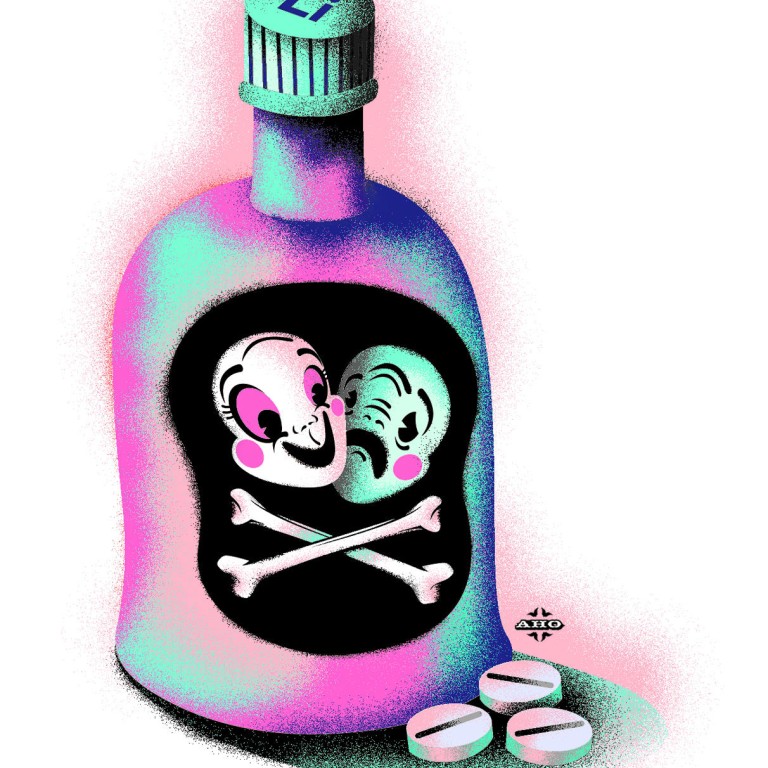
Case History: Lithium poisoning
Teddy Mak's family noticed that he was behaving a little oddly. The 49-year-old did not appear to fully understand them when they spoke, and seemed a little confused. He was also increasingly unsteady when he walked and appeared to be losing his muscle strength.
Mak (whose name has been changed for patient confidentiality reasons) had two pre-existing conditions: cardiomyopathy, or disease of the heart muscle, for which he was regularly taking medication, and bipolar affective disorder, which causes extreme mood swings.
Mak had been taking lithium to control the mood swings, and had successfully managed the condition for more than a decade. There had been no recent adjustments to his dosage.
But the unusual symptoms he was displaying did not fit any of his known conditions. After a few months of deterioration, his family decided to take him to hospital.
At Queen Elizabeth Hospital, the doctors noted he had a mild fever and was slightly confused when speaking. His ability to follow simple instructions, like "open your mouth", was mildly impaired.
Given his long history of taking lithium, which can cause serious side effects, or even death in the case of overdose, his blood was tested for lithium levels. They found 3.2 millimoles per litre. This was well above normal levels of between 0.5mmol/L and one mmol/L.
Based on the blood test results, Mak was suffering from acute lithium toxicity. Although he did not have classic symptoms such as nausea, vomiting and cramps, doctors knew that they needed to flush the excess lithium from his bloodstream.
Mak was admitted and put through saline diuresis, a process in which his body was infused with saline solution to stimulate the kidneys and accelerate the excretion of lithium via urine. This treatment succeeded in reducing the lithium levels in his blood to 1.6mmol/L by the fourth day.
In light of Mak's slight fever and mental confusion, doctors also performed a lumbar puncture to obtain cerebrospinal fluid to test for infection of the central nervous system. Results were negative for infection and other tests, such as a Computed Tomography (CT) scan of his brain, did not indicate any other problems.
However, on the fourth day, despite decreasing lithium levels in his blood, Mak collapsed and fell unconscious.
His body exhibited none of the basic reflexes such as the knee-jerk reflex, indicating a problem with the nervous system.
He was taken to the ICU where Dr Stanley Chan Choi-hung, a specialist in intensive care medicine, was called in.
Chan examined Mak and found that he had reduced muscle tone in all four limbs and that the muscles controlling his eye movements were paralysed. A repeat CT scan of his brain showed no significant change from the first scan.
As Mak was in a deep coma, Chan inserted a tube into Mak's windpipe to ensure he continued to receive air in his lungs.
To speed up the flushing of lithium from Mak's system, Chan put him on Continuous Veno-Venous Haemofiltration (CVVH), where Mak's blood was fed into a dialysis machine to be cleaned before being returned to his body.
After eight hours of CVVH, lithium levels in Mak's blood dropped to a normal 0.8mmol/L, and he was taken off the CVVH machine. But Mak remained in a deep coma. Chan conducted further tests in an attempt to uncover the cause but found no clues.
He then performed nerve conduction tests to check how well electrical signals were travelling along Mak's nerve pathways.
Chan found that Mak's peripheral nervous system was impaired, a condition called peripheral neuropathy. The peripheral nerves carry signals between the spinal cord and the rest of the body.
Although the most likely explanation for Mak's condition was lithium poisoning, lithium toxicity usually affects the central nervous system such as the brain and the spinal cord.
This would normally give rise to symptoms such as odd eye movements, involuntary muscle contractions, involuntary repetitive muscle movements or even convulsions. The peripheral nervous system is seldom involved: the last documented case in medical literature was in the 1980s.
Chan tested Mak for other possible causes of peripheral neuropathy, such as heavy metal poisoning and immune disorders. All tests were negative.
On the third day in ICU, Mak suddenly woke up, to the relief of his family and the doctors. He gradually improved and was increasingly able to follow simple instructions and regain muscle control.
The next day, Chan removed his breathing tube. By day five, Mak had improved so much that he regained eye movement and could eat without choking. By day eight, Mak was moved from ICU to the general ward and made an uneventful recovery thereafter.
Chan theorised that while the lithium levels in Mak's blood were decreasing, lithium had accumulated within the cells of his body. The lithium had breached the body's threshold and caused it to shut down before it was flushed out.
Mak was lucky that the lithium had not caused permanent damage to his brain. Despite the severe effects of peripheral neuropathy caused by the lithium toxicity, it is reversible with support and care. The prognosis is good, says Chan.
Lithium was once banned by the US Food and Drug Administration for its toxic side effects, but the ban was lifted and the drug continued to be used in bipolar treatment.
Other bipolar medication has emerged, and these have generally overtaken lithium in popularity of use, says Chan. Mak, too, has now been put on different medication.
